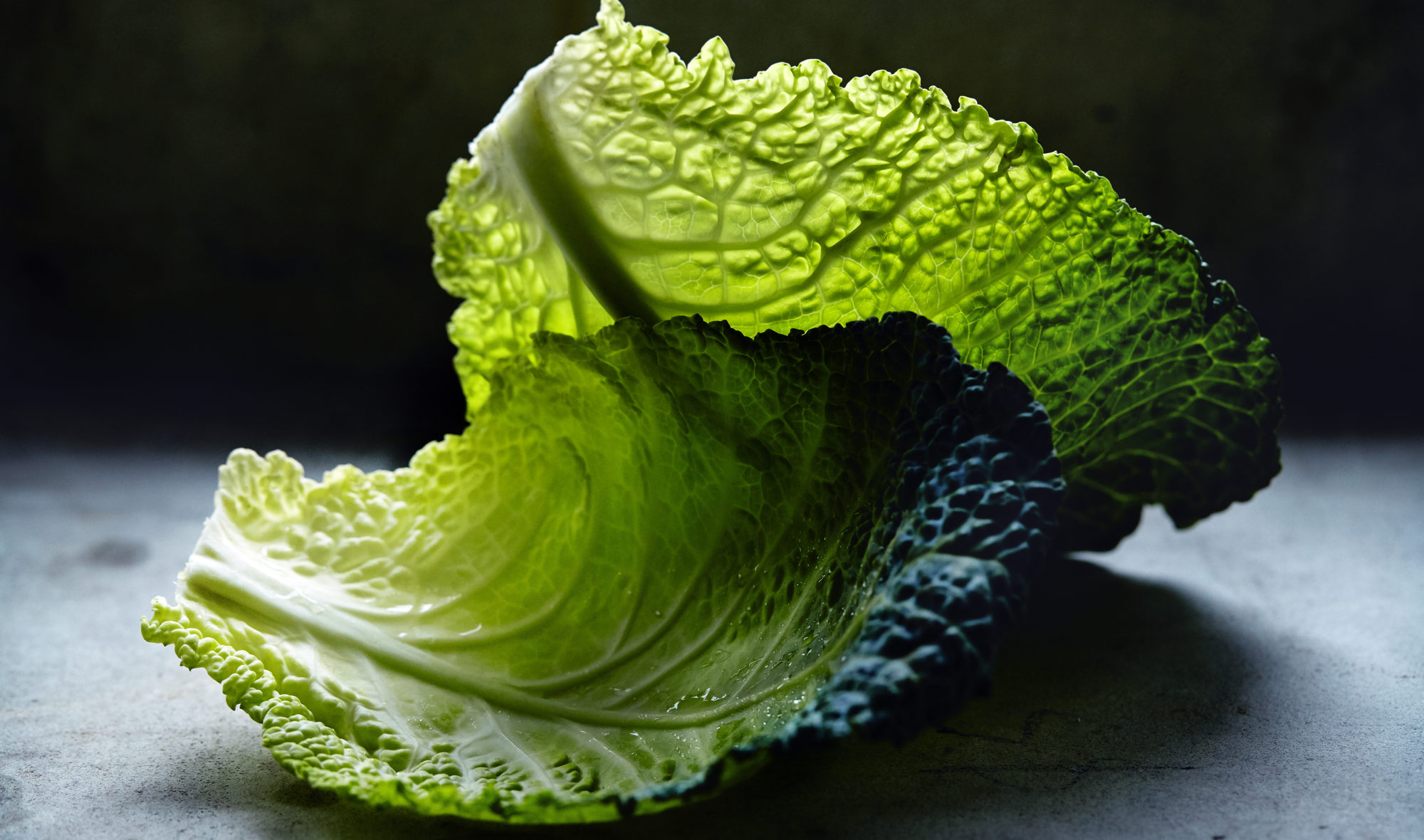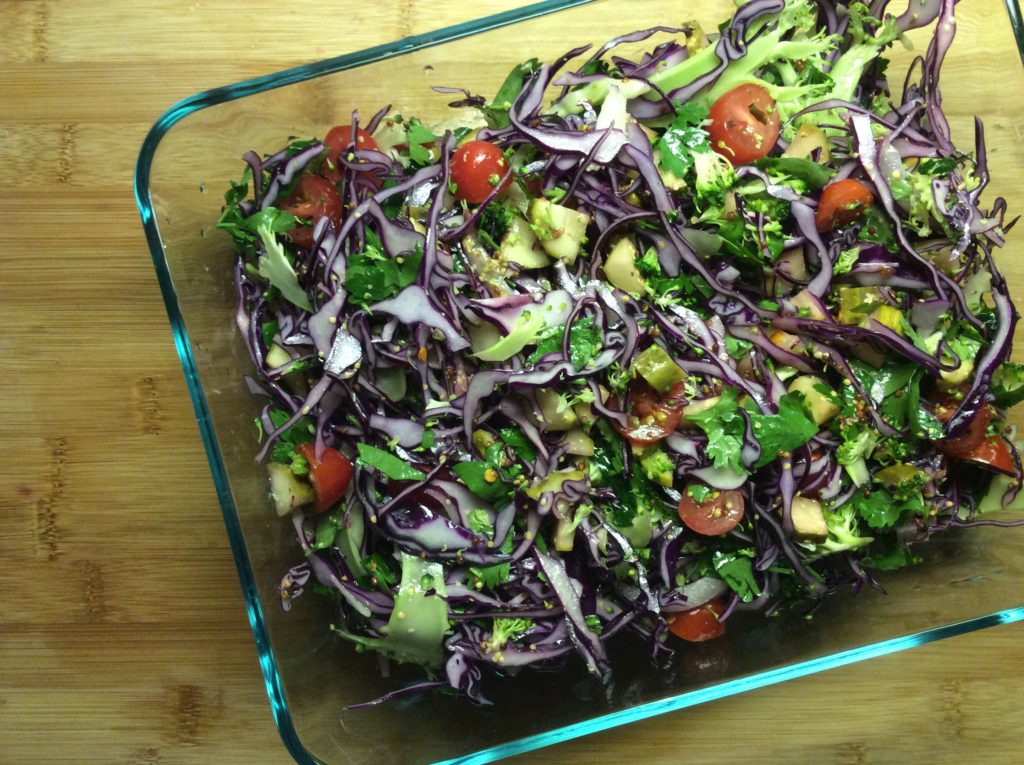Cabbage


The green or purple cabbage is a head-shaped vegetable belonging to the Brassica family. Inexpensive, hardy, and easy to store, cabbage is a mainstay of cuisines throughout the world. It is high in vitamins C and K as well as numerous protective phytochemicals. Whether you eat it raw, fermented, or cooked, this dependable old standard deserves a place of honor at your table.
Cabbage is a green or purple vegetable that belongs to the important Brassica family—a group that also includes brussel sprouts, kale, kohlrabi, broccoli, bok choy, and collard greens.
An excellent source of vitamin C, vitamin K, and folate, and a great source of protective phytochemicals, cabbage has been a mainstay of many cuisines for thousands of years. Fresh and crunchy when eaten raw, it can also be fermented (as in kimchi or sauerkraut) or cooked in a variety of ways, including steamed, sautéed, braised, or stuffed.
Inexpensive and hardy, cabbage has understandably become a popular storage vegetable. But it’s at its best and tastiest in the fall to winter months, when it’s in season.
The word cabbage derives from the Celto-Slavic root, cap or kap, meaning “head”—and this is one easy way to identify the vegetable. A cabbage is typically about the size and shape of a person’s head!
Cabbages weigh between 0.5 to 4 kilograms or 1 to 9 pounds. Their multi-layered leaves may be smooth or crinkled, depending on the type. Savoy cabbage has darker green, crinkly leaves and a mild taste, while white or green cabbage is mid-green to very pale green with smooth, tightly packed leaves and a more intense crunch and flavor. Purple or red cabbage is eggplant-hued with white streaks towards the core. It is crisp, a bit sharp in taste, and usually smooth-leaved.
A related species is the Chinese or Napa cabbage. This variety is usually oblong in shape and has lightly crinkled, mild tasting, yellowish-white leaves. Chinese cabbage is excellent eaten raw in salads, dropped into soups and quickly steamed, or stir fried.
1 cup of raw green cabbage contains 22 calories, 0g of fat, 1.0g of protein, and 5.0g of carbohydrates. It provides 2.0g of dietary fiber (or 9% of your daily requirement).
It is an excellent source of vitamin C, offering 54% of your daily requirements, and a good source of vitamin K as well as several minerals, including iron, calcium, and manganese.
Recent research suggests that cabbage is especially high in cancer-protective glucosinolates. Savoy cabbage in particular contains high levels of sinigrin, which is known to help prevent colon, bladder, and prostate cancers.
If you want to preserve these nutritional benefits, it’s best to steam your cabbage. First, because steaming improves its cholesterol-lowering properties. Steaming also preserves more glucosinolates than microwaving, despite longer cooking time.
Purple or red cabbage is a special nutritional powerhouse. In addition to its other benefits, is very high in the polyphenol anthocyanin, which has special anti-inflammatory and antioxidant qualities.
Choose firm, tightly packed, and brightly colored cabbages with a fresh, crisp scent. Those that look shriveled, cracked, wilted, or bruised are less fresh and may be damaged at the core.
It’s best to buy cabbage whole rather than sliced because once it is cut, its vitamin C quality begins to go down.
For centuries, cabbage was one of the few green vegetables that people in northern climates could eat during the winter months. This is because it stores relatively well in a cold room and it can also be pickled and fermented.
To preserve the vitamin C content of cabbage as long as possible, store it loosely wrapped in plastic in the crisper of your fridge. Red and green cabbage will last that way for a couple of weeks. Savoy cabbage will last about a week.
Cut cabbage quickly begins to lose its valuable vitamin C content. So if you need to cut a cabbage in pieces, wrap the remainder tightly in plastic, keep it cool, and use within a couple of days.
To prepare a cabbage for eating or cooking, first peel away the outer leaves. The inside is usually clean, but you may want to rinse it anyway. Ensure there is no damage at the core. If you see evidence of worms or insects, soak the head in salted or vinegar water for 15 to 20 minutes before proceeding with your recipe.
Use a stainless steel knife rather than carbon steel to cut cabbage. Carbon steel reacts with phytochemicals to turn the vegetable an unappetizing black. You can slice cabbage by hand, or in a food processor, or you can grate it.
The simplest way to eat cabbage is simply to slice and serve raw! It is a fresh-tasting basis for salads or a crunchy addition to other greens.
You can also toss slices or diced cabbage into a soup that you are preparing.
Steaming cabbage is simple. Slice in whatever way you’d like, place in a steamer basket over boiling water, and allow to cook, covered, until tender. Add a bit of salt, pepper, and oil or butter, along with any herbs or flavorings you might like, and serve.
Some people object to a slightly bitter taste in cabbage. But bitterness may actually indicate high nutritional value. So instead of seeking out milder tasting versions (or avoiding cabbage altogether) enjoy it in preparations that “sweeten” it. Examples include red cabbage braised with wine and apples; green cabbage cooked with ginger and garlic; cabbage braised with sweet onion, or cabbage, carrot, and beet slaw.

This salad is light and fresh. The ingredients come together to create a delicious combination that's sure to please.
Prep Time: 15 minutes Cook Time: 0 minutes Yield: 8 servings
Begin by shaving the cabbage and broccoli and cutting up the onion, tomatoes, and dill pickles.
Next, in a large bowl, combine the olive oil, mustard, lemon juice, and salt. Add the cabbage and toss until incorporated. Finally, add the broccoli, onion, pickles, tomatoes, and herbs. Toss gently until combined.
Serve, and enjoy!
Precision Nutrition’s Encyclopedia of Food expands every single month as we highlight new foods and showcase beautiful food photography. If you’d like to stay up to date, simply click this link. From there, we’ll send you a FREE copy of our recipe book. We’ll also let you know when new and delicious foods are added to the site.
The green or purple cabbage is a head-shaped vegetable belonging to the Brassica family. Inexpensive, hardy, and easy to store, cabbage is a mainstay of cuisines throughout the world. It is high in vitamins C and K as well as numerous protective phytochemicals. Whether you eat it raw, fermented, or cooked, this dependable old standard deserves a place of honor at your table.